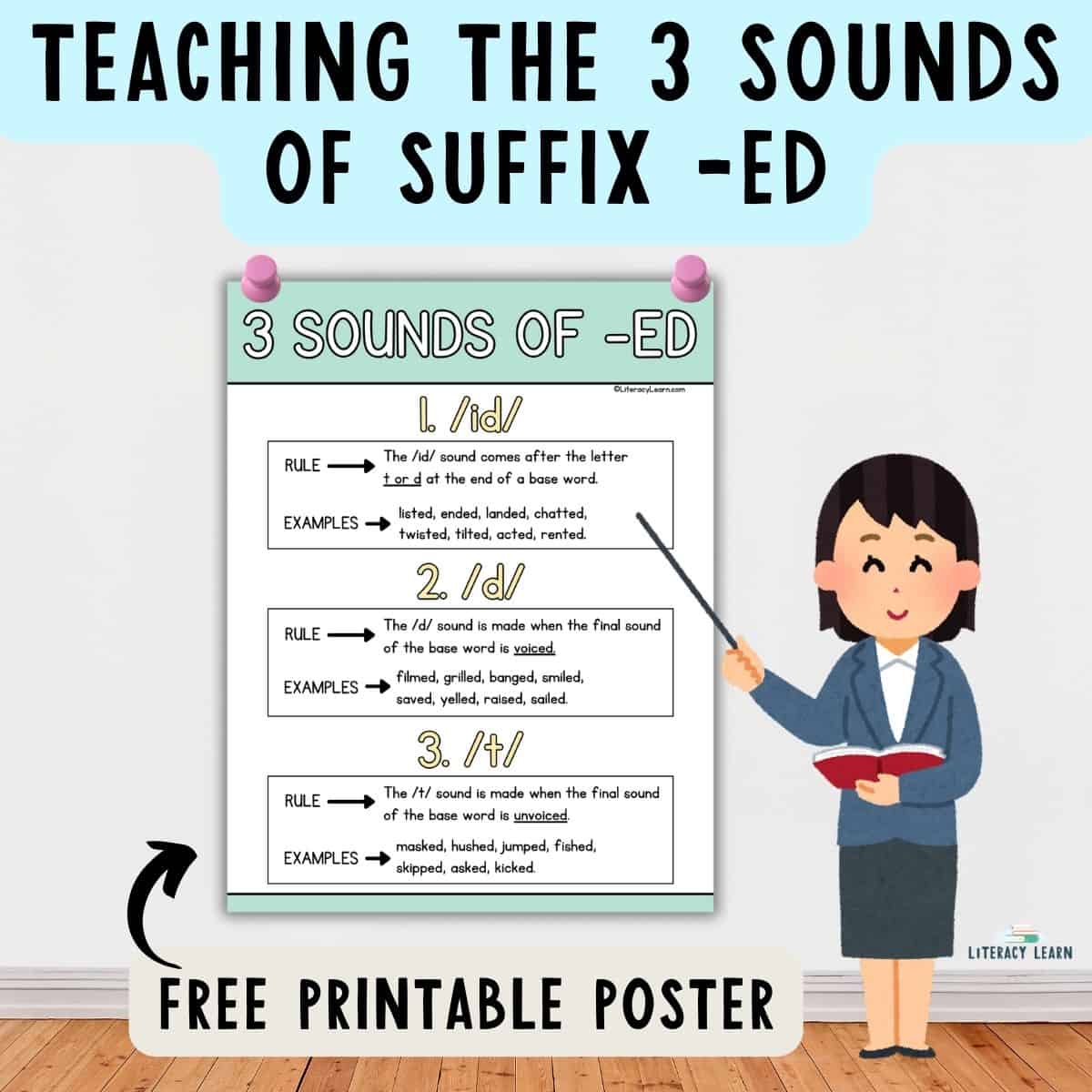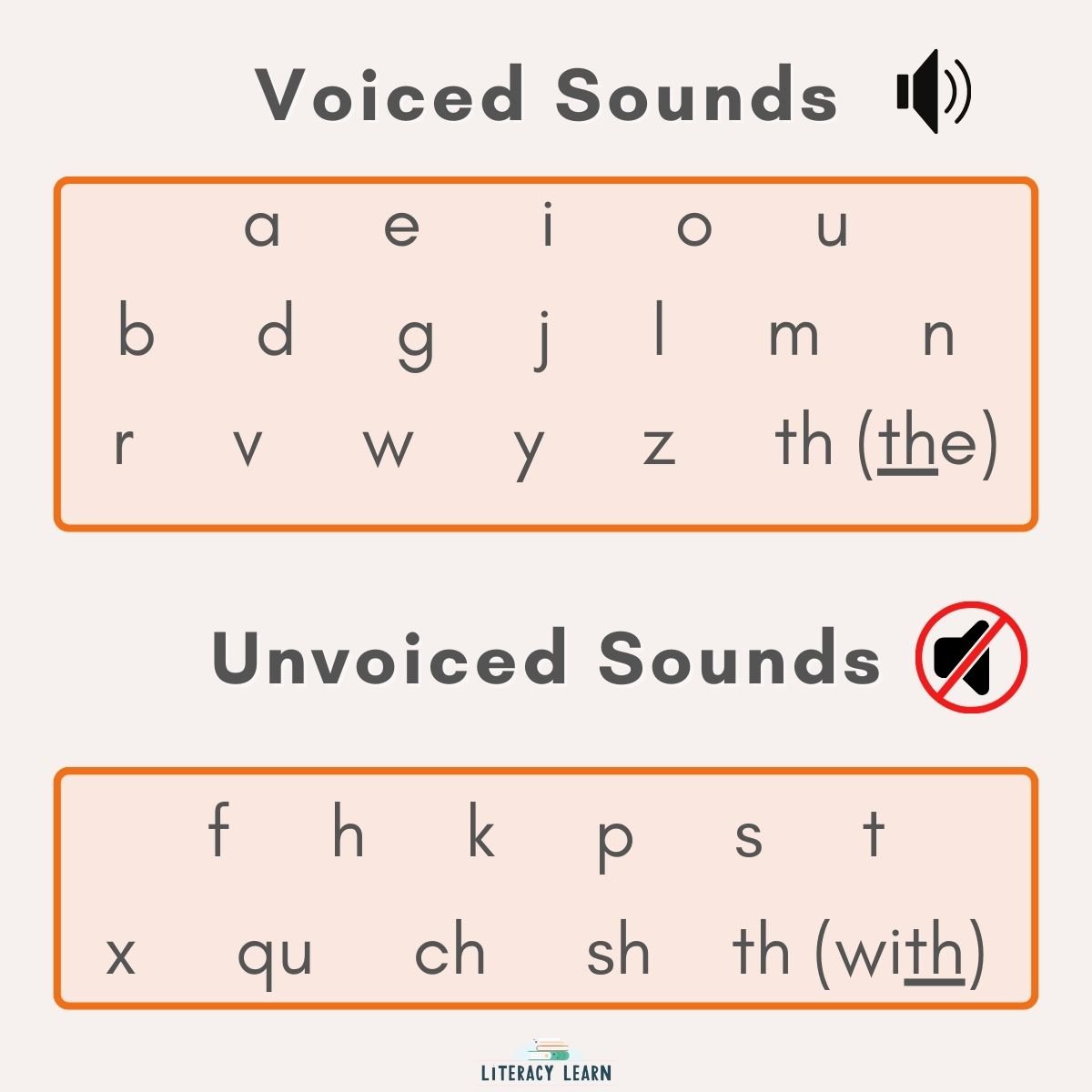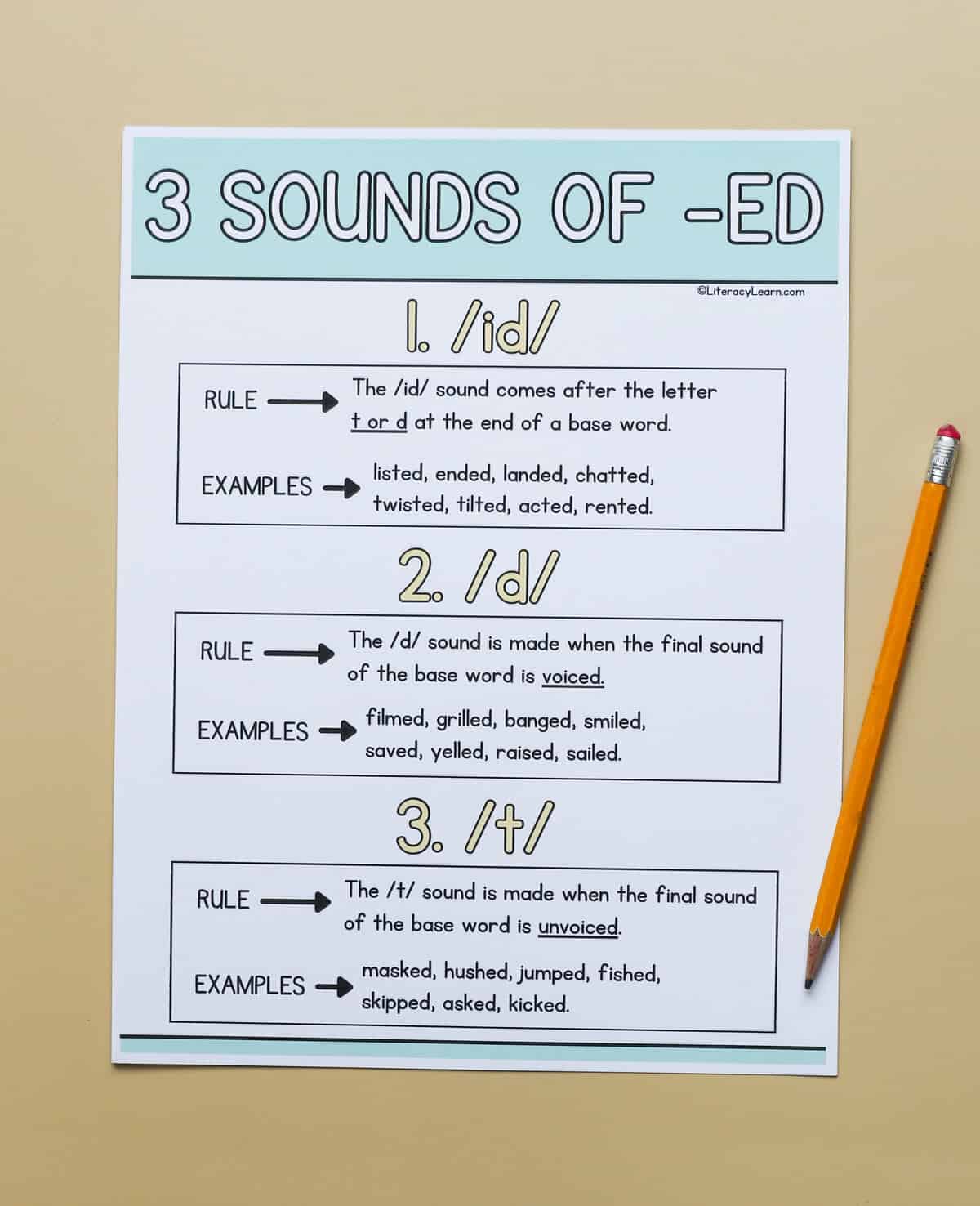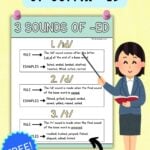3 Sounds of Suffix -ED + Free Printable Rules Poster
This post may contain affiliate links. As an Amazon affiliate, we earn from qualifying purchases.
Learn all about the three sounds of suffix -ed, including the rules for when each sound is used within base words. Then grab yourself a free printable poster that will reinforce the rules for correctly pronouncing suffix -ed sound words!

All About Suffix -ED
A suffix is a meaningful word part added to the end of a base word. Adding the suffix changes the base word’s meaning in some way.
Suffix -ed is one of the most commonly used suffixes in the English language. Other common ones include suffix -s/-es and -ing.
When suffix -ed is added to a regular verb, it makes the word past tense. The suffix adds to the verb’s meaning to show that the action already happened.
- act – acted
- pat – patted
- jump – jumped
- film – filmed
As long as the verb is regular, it’s easy to add a suffix to the word. For spelling, one would simply write the letters –ed to make the verb past tense.
However, pronunciation can be tricky because suffix -ed can represent 3 different sounds!
Being able to correctly pronounce the suffix -ed depends entirely on the base word. If children learn the 3 sounds of suffix -ed, along with other rules, they can determine how to pronounce the word correctly.

Voiced vs. Voiceless Sounds
In order for students to learn these rules, they first need to be familiar with the terms ‘voiced’ and ‘voiceless’ sounds.
🗣 Voiced means the vocal cords are turned on.
An easy way to check to see if a sound is voiced is to say the sound with your hands on your vocal cords. If you feel the vocal cords vibrating, then the sound is voiced.
- Voiced sounds include: a, e, i, o, u, b, d, g, j, l, m, n, r, v, w, y, z, th (the).
👤 Voiceless means that the vocal cords are not turned on and only air comes out when saying the letter sound.
🏫To learn more about these terms and why they’re important, visit our post on voiced and voiceless sounds.
3 Sounds of -ED
Suffix -ed can make three sounds: /id/ /d/ and /t/. Students should learn the rules for each pronunciation.
Why teach these rules? Learning the -ed rules will help children read words correctly with proper pronunciation, and knowing the rules will also help with spelling.
Often times children may hear a /t/ or /d/ at the end of a past tense verb, so when they attempt to spell the word they add the letter t or the letter d. Knowing that suffix -ed can say all three sounds will help kids to spell words correctly.
1. /id/
Rule: The /id/ sound comes after the letter t or d at the end of the base word.
Examples: listed, ended, landed, twisted, tilted, acted, rented, chatted*
This suffix added an extra syllable that is pronounced. And the /i/ sound is a schwa, because it it in the unstressed syllable.
2. /d/
Rule: The /d/ sound is made when the final sound of the base word is voiced.
Examples: filmed, grilled, banged, smiled, saved, yelled, raised, sailed, bagged*
3. /t/
Rule: The /t/ sound is made when the final sound of the base word is unvoiced.
Examples: masked, hushed, jumped, fished, asked, kicked, skipped,* hopped*
👉🏽 In words like chatted, skipped, hopped, or bagged, you’ll notice that the final consonant of the base word is doubled before adding -ed. To read about this rule and grab free printables, visit our post on the Doubling Rule.

📃 3 Sounds of -ED Poster
Grab this fun, bright poster that clearly outlines the three ways to pronounce suffix -ed, along with the rules and examples.
Tip: Print on poster-size paper and hang as an anchor for your students. You can also print it on regular paper and staple it inside your student’s interactive phonics notebook as a personal reference.
🙋🏽♀️What to know more about morphology? Visit our posts to learn all about word sums and how to use word matrices and grab some free morphology printables. These are super effective ways for kids to analyze word parts and build new words!

You can also grab our popular products for Word Building, Word Analysis: 25 Greek Bases, and 20 Latin Bases. These are sure to be amazing supports to your morphology instruction.
Download & Print
DOWNLOAD TERMS: All of our resources and printables are designed for personal use only in homes and classrooms. Each teacher must download his or her own copy. You may not: Save our files to a shared drive, reproduce our resources on the web, or make photocopies for anyone besides your own students. To share with others, please use the social share links provided or distribute the link to the blog post so others can download their own copies. Your support in this allows us to keep making free resources for everyone! Please see our Creative Credits page for information about the licensed clipart we use. If you have any questions or concerns regarding our terms, please email us. Thank you!
Are you using this poster? How do you teach morphology? We’d love to hear about your experience! Please leave a comment below or tag us on Instagram @literacylearn.



Always thank you for the free downloads. Big help.